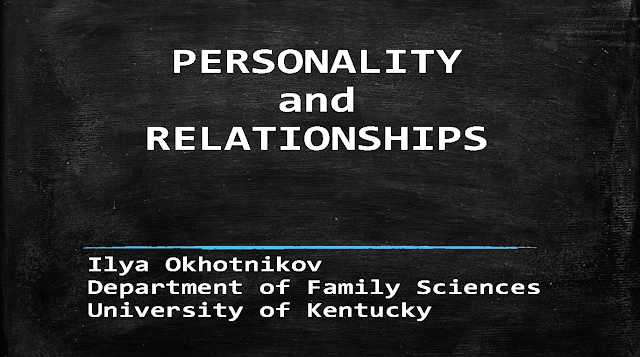Throughout its history, Russian people have been under oppressive regimes of Tsars, Russian Orthodox Church, Communism, and “sovereign democracy” (Matvienko, 2008). These shifts have had concomitant changes in the definition of relational health. Thus, Russian family development can be broadly divided into three large chronological stages: (a) evolution, before 1917; (b) revolution, between 1917 and 1990; and (c) reformation, after 1990 (Antonov & Medkov, 1996). However, due to the rejection of psychology as a science USSR leadership, studying psychology required a special authorization from the government (Umrikhin, 1991). As a result, data related to relationship formation and health is scant prior to 1970 making the cultural and social context in the first two chronological stages instructive.
The evolution of Russian family from the times of Leo Tolstoy, (19th century) up to 1917 were characterized by the dominance of the Russian Orthodox Church and the patriarchal structure of the society left little room for women to have their voices, rights, or public activity with pre-arranged marriages as a common practice. This approach to marriage was overturned in the October Socialist Revolution in 1917.
The revolutionary period emphasized gender and class equality that resulted in structural functionalism as the model for a successful marriage including a strong ideological drive for women’s labor outside and inside the home. This model was predominant up to the turn of the 21st century and still dominant in the majority of the Russian population (Gavrov, 2009). Mate selection was influenced by the family of origin to some extent and the Soviet agenda. According to soviet ideals, a happy family had a husband who did not abuse alcohol, shared household chores, and was a trustworthy breadwinner (Pushkareva, 2012). The wife having to fulfill expressive function also had to work full time and was in charge of the household’s dynamics and homework (LaFont, 2001). Additionally, in exchange for women’s labor the Soviet government provided free childcare and schooling, indoctrinating children and adolescents in collectivistic preferences and values, including the “ideal” Soviet family, thereby institutionalizing the definition of family (Uspenskaya & Borodin (2004).
The current shift of relational values seen in Russia started around the mid-1980s and culminated in the drastic collapse of the USSR in 1991 liberating the definition of family from ideological regulation. Increased freedom of mate selection, sexual freedom, and egalitarian roles became more prevalent in marriage, especially in large cities (Vishnevskiy, Zakharov, & Ivanova, 2008). Tsirkon (2013) suggests that the contemporary Russian family is heterogeneous nuclear with one or two children dual-earner with recognized male leadership and officially registered union.
Recommended Methods
Due to the dramatic changes in the macro cultural/political environments, relationship assessment is a complex affair. Expectations for what constitutes a “good” relationship could include elements of patriarchy, communist informed expectations of equality and family size, conservative attitudes toward fidelity and family forms, in addition to more “liberated” expectations to marry by choice. Clearly, more work needs to be done.
References
Antonov, A.I. & Medkov, V.M. (1996). Социология семьи [Sociology of family]. Retrieved from: http://socioline.ru/pages/aiantonov-vmmedkov-sotsiologiya-semi
Brocgaus F. & Efron I. (1895). Krestyane [Peasants]. In The Brocgaus and Efron Encyclopedia. (Vol. 16a, pp 675-725). St.Petersburg, Russia: I.A. Efron. Available from: http://ru.wikisource.org/wiki/%D0%98%D0%BD%D0%B4%D0%B5%D0%BA%D1%81:Encyclopedicheskii_slovar_tom_16_a.djvu
Dmitrieva, O. (2010, April 14). В декрет идут мама, и папа [And mom, and dad take maternity leave]. Российская газета. Retrieved from: http://www.rg.ru/2010/04/14/dekret.html
Gavrov, S.N. (2009). Историческая эволюция институтов семьи и брака [Historical change of marriage and family institutions]. Retrieved from: http://lit.lib.ru/g/gawrow_s_n/sergeygavrovhistoricalevolutionoftheinstitutionsofmarriageandfamily.shtml
Kudryashova, E. (2014, January 13). Налог на бездетность [Tax on childlessness]. Летидор. Retrieved from: http://letidor.ru/article/nalog_na_bezdetnost_92841/
LaFont, S. (2001). One step forward, two steps back: Women in the post-communist states. Communist and Post-Communist Studies, 34, 203-220. doi:10.1016/S0967-067X(01)00006-X
Matvienko, Y. (2008). Институционально-правовые модели легитимации суверенной демократии в современной России [Institutionally Legal Modules of Legitimatizing of Sovereign Democracy in Contemporary Russia]. (Doctoral Thesis, Rostov Juridical University of Ministry of Internal Affairs, Rostov-on-Don, Russia). Retrieved from: http://law.edu.ru/book/book.asp?bookID=1292726
Organisation for Economic Co-operation and Development. (2013, April) Russia: Modernising the Economy. Retrieved from: http://www.oecd.org/russia/Russia-Modernising-the-Economy-EN.pdf
Prigadov-Kudrin, A. I. (1922). Брачное право и наследование [Marital law and inheritance]. Ezhenedelnik sovetskoi ustitsii, 12. Avalible from: http://www.prlib.ru/Lib/pages/item.aspx?itemid=78008
Pushkareva N.L. (2003). Женщины в исторических судьбах России X-XIX вв. [Women in historical providences of Russia of 10th – 19th centuries]. Женщина плюс, 2. Retrieved from: http://www.owl.ru/win/womplus/2003/02_13.htm
Pushkareva N.L. (2012). Гендерная система Советской России и судьбы россиянок [System of genders in Soviet Russia and density of Russia’s women]. Новое литературное обозрение, 117(5). Retrieved from: http://www.nlobooks.ru/node/2613
Sifman, R. I. (2010) Динамика численности населения России за 1897-1914 гг. [Russian Population Dynamics 1897-1914]. Center for Demography and Human Ecology, Institute for Economic Forecasting. Russian Academy of Science. Демоскоп Weekly. Retrieved from: http://demoscope.ru/weekly/knigi/polka/gold_fund05.html#1
Umrikhin, V. V. (1991). “Начало конца” поведенческой психологии в СССР [“Beginning of the end” of behavioral psychology in the USSR]. In M. Yaroshevskiy (Ed.), Репрессированная наука (pp. 136-145). Retrieved from: http://www.ihst.ru/projects/sohist/books/os/136-145.htm
Uspenskaya, V. I., & Borodin, D. Y. (2004). Family relations in 20th century Russia as a projection of popular beliefs, scholarly discourse and state policies. Contemporary Perspectives in Family Research, 5, 237-248. doi:10.1016/S1530-3535(04)05015-0
Vishnevskiy, A., Zakharov, S., & Ivanova, E. (2008). Эволюция российской семьи [Evolution of Russian family]. Экология и жизнь, 9. Retrieved from: http://elementy.ru/lib/430652
Zakharov, S. (2003) Воспроизводство поколений россиян [Reproduction of generations of Russians]. Демоскоп Weekly, 125-126. Retrieved from: http://demoscope.ru/weekly/knigi/polka/gold_fund05.html#1
Zhvinkline, A. B. (1988). Young family: Expectations and reality (Doctoral dissertation). Retrieved from: http://cheloveknauka.com/molodaya-semya-ozhidaniya-i-realnost
Zircon Research Group. (2013). Семейные ценности в современных СМИ [Family values in contemporary media] (Research Report). Retrieved from Zirkon Research Group website: www.zircon.ru/upload/iblock/4de/Semeynie_cennosti_v_SMI_Analiticheskoe_resume.23.10.13.pdf
Толстой, Л.Н. (1987) Анна Коренина. [Anna Korenina]. Собрание сочинений в двенадцати томах, Vol. 1. Moscow: Pravda. Retrieved from: www.magister.msk.ru/ library/tolstoy/prosa/tolsl010.htm












































